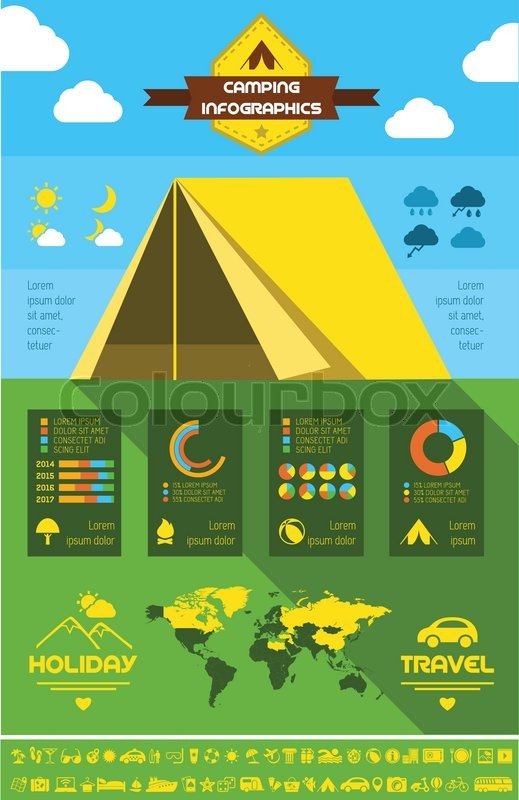Bell tents are coming to be increasingly prominent as flexible, fashionable sanctuaries for camping and glamping. However what's the background behind this long-lasting design?
Why does my tent get wet inside?
Henry Hopkins Sibley patented the single-pole conical camping tent that we understand as a bell outdoor tents. However, he defected to the Confederacy and never got his aristocracies.
Inevitably, someone else added short walls to the cone cover and designed what we currently know as a bell tent.
Origins
The popularity of bell camping tents is expanding, and they're currently a staple at outdoor camping events and as stylish backyard resorts. Their roomy insides supply an adaptable home from home setting that's ideal for families and groups of pals, while the round style aids with security in solid winds.
The layout of the modern-day bell tent can be traced back to military tents used by European armies during the Crimean War in 1853-1856. Then, in America, a soldier called Henry Hopkins Sibley patented a similar structure that drew inspiration from American Tipis.
Both designs are still in use today. However, Sibley tents differ from their more recent cousins in that they have side walls and a raised larger entrance. Sibley tents also rely on a single main pole for support that makes them less complex to set up however restricts arrangement options.
Purpose
Bell tents' unique shape and sizable insides make them the excellent selection for a wide range of exterior tasks. Whether you're hosting a yard camping event, glamping at a remote all-natural resort or going on an epic fantasy-inspired journey, the convenience of these outdoors tents makes certain that your experience will certainly be comfortable and trendy.
The bell-shaped camping tent was originally patented in 1856 by Henry Hopkins Sibley, who had actually designed the design after observing Native American tipi tents. However, he surrendered from the United States Military at the episode of the Civil Battle, waiving his civil liberties to future aristocracies.
Ever since, the design has actually ended up being a staple of lots of glamping experiences. These lavish outdoors tents usually include deluxe bedding and en-suite restrooms, offering campers the possibility to delight in nature without compromising convenience.
Design
In the modern, bell outdoors tents have actually experienced a resurgence in popularity, as individuals seek out an extra immersive outside experience. They are used in a range of settings, consisting of camping, glamping, and occasions. Their distinct shape, sizable insides, and relatively easy setting up make them a prominent choice for those looking for a classy, historic flair to their exterior experiences.
The distinct shape of a bell tent develops high ceilings and adequate headroom, making it comfy to stand in and move around. Additionally, the center pole is not put near the entryway of the outdoor tents, permitting even more privacy and space inside the sanctuary.
The bell camping tent layout traces back to an American soldier called Henry Hopkins Sibley, who was influenced by Indigenous American tipi tents when developing his variation of the bell outdoor tents in 1856. His design was a considerable renovation over traditional army outdoors tents, which were challenging to transport because of their complicated building.
Products
In contemporary times, Bell Tents are crafted from exceptional materials that are made for lasting longevity. This is why they are a prominent selection among leisure campers, festival-goers, and glampers alike.
In the 19th century, a United States Army officer called Henry Hopkins Sibley adjusted standard camping tents into what is now known as the modern bell tent. He based his design on Native American Tipi structures, adding short walls to the main post structure that made it extra stable.
Today, polycotton canvas is a common material utilized in the building of bell outdoors tents. This mix of cotton and polyester supplies a wide variety of benefits, consisting of breathability, remarkable weather condition resistance, and simpler upkeep than pure cotton canvas. This textile is additionally long lasting and abrasion-resistant. It is thicker than many nylon materials, nonetheless, which can make it heavy and extra costly than regular tents.
Contemporary
In modern day, the appeal of Bell Tents has blown up thanks to glamping websites and events offering up these roomy camping tents for pairs, teams and family members to enjoy. The aesthetic charm and resilience of these circular tents are interesting several campers.
Whether it be rainfall or wind, these tents hold their canvas tent stove own against the aspects. Commonly, they're made with canvas that is dealt with to protect versus wetness, mildew and UV rays.
How much is a small tent?
It isn't clear exactly when these outdoors tents were developed, but it's extensively understood that they're a variation of a Sibley outdoor tents - called after Henry Hopkins Sibley, who adapted the layout of the American Indian tipi. It is believed that whoever added brief wall surfaces to Sibley's cone canopy was responsible for the production of the bell camping tent as we know it today.
